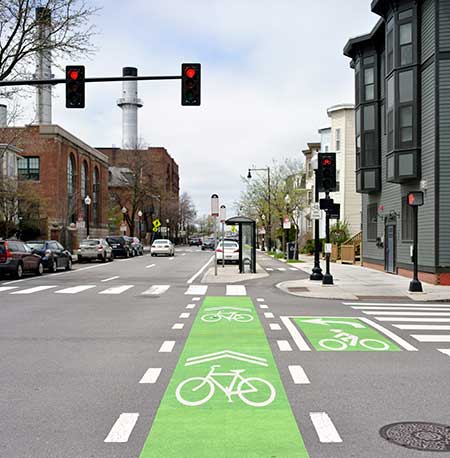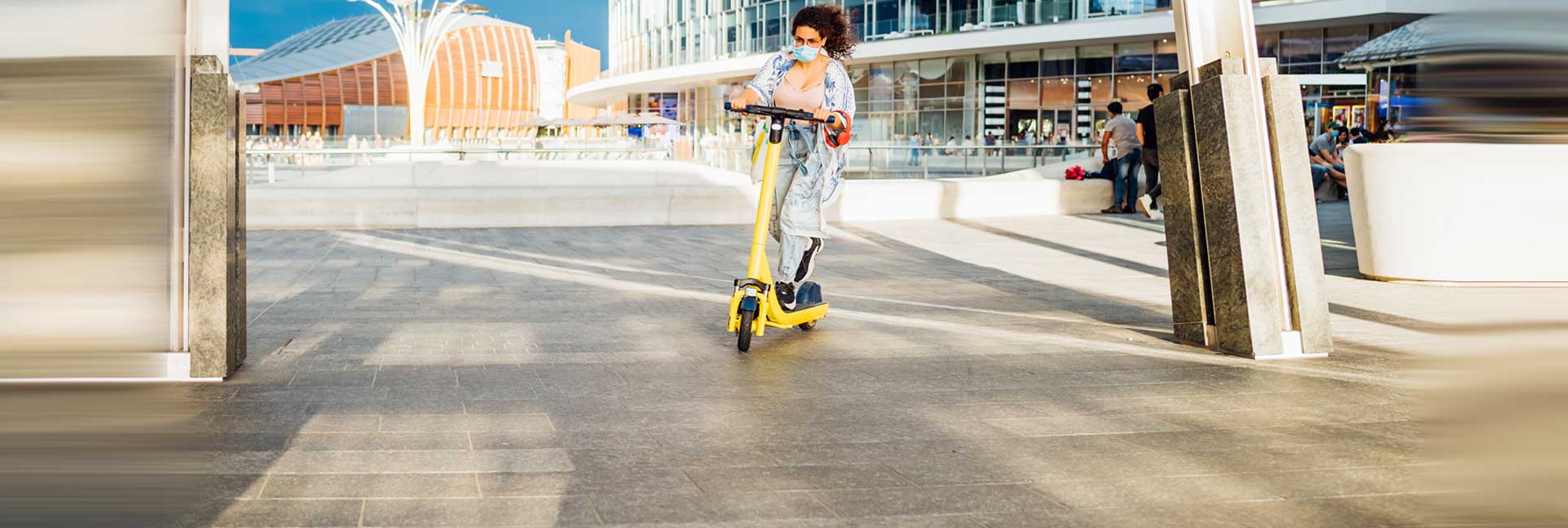“We should not think that a city becomes smart and resilient by chance on its own. We should clearly articulate the risks for which we want to be resilient.”
Gioia Ghezzi, Vice President of Assolombarda for Sustainable Development and Smart Cities and president of Azienda Trasporti Milanesi (ATM - the municipal public transport company in Milan), tells Urban Stories about the main conclusion to draw from the recent pandemic and the events of recent months: “A resilient place needs to be planned. We should adapt ourselves promptly and identify the tools currently available to ensure such resilience.”

Gioia Ghezzi, Vice President of Assolombarda
Underlining that the COVID-19 pandemic has forced the entire world to adapt to a new normality, changing rules and habits, is a consideration that seems almost trivial today.
The effects of the crisis have suddenly affected citizens, companies, and organizations in the span of just a few months, placing the social system itself in trouble and shedding light on different areas of latent fragility: from connections that globalization has now involved, to the extreme vulnerability of cities that are still not ready to truly modify their organizational models.
This condition has forced significant reflection on the role that urban environments have played in recent months and the direction of their evolution, closely touching the concepts of smart city and resilient city. We are beginning to speak about the need for new urban planning that should be capable of looking at the long term and making bold choices to adaptively respond to a context that is subject to change. This issue should see the environment playing a fundamental role and involve extremely current topics such as sustainable urban mobility, intermodal transport, and emissions control.
Gioia Ghezzi is convinced of this: cities should be called ‘smart’ when they are able to use technology to serve the objectives of sustainability and improve citizens’ well-being.
“The COVID-19 pandemic has taught us that living in sustainable cities is necessary to block the spread of the virus. However, economic growth and sustainable development need not to oppose each other. The most enlightened economists, such as the Nobel Laureate Joseph Stiglitz, have long maintained that it is necessary to change this paradigm. In fact, a smart city may not only help to overcome a health challenge like the one caused by COVID-19, but also serve as a cornerstone of recovery. A smart city can, for example, monitor and predict gatherings and traffic flows, both to protect people’s health and to improve the quality of life in the city.”
But there are conditions that should necessarily be created and predisposed so that a place, a city, can truly become ‘resilient’ to socioeconomic changes. Such is the case when land is prepared to be cultivated to become productive and adaptable to external agents that could undermine and alter its systemic balance at any moment. “If we continue to plan infrastructure of a certain type, we will continue to obtain certain results. For example, if we continue to plan large traffic arteries for cars and large car parks, we will continue to have cities full of cars. If we continue to create communication and data networks that do not communicate among themselves, we will never be able to measure, predict or alert. We must therefore do in-depth, technical work and make bold choices. It is essential to follow a long-term vision to guide the choices and create a different level of action designed to cross the temporal horizons of the individual administrative terms. The real goal is extremely lofty and we cannot suppose that objectives such as the sustainable development of a territory or its rate of technological innovation can be achieved without a path that looks ahead to 2050.”
A resilient, smart context should also be aware of the needs of the community living there, with requirements that change over time based on social, environmental, economic, and health dynamics. The dynamics between individuals and community in the cities of tomorrow should render a ‘sense of geographical and virtual community.’ Moreover, many cities in Europe — Paris and Milan come to mind — together with the C40 network, are promoting an idea of the “15-minute city”. On closer inspection, this is a response to the current crisis, but it also gives a push to central issues for building the future, such as sustainability, and also overcoming the concept of peripheries as we know them. This means valuing our neighbourhoods, getting to know them again, getting involved in making them beautiful, and really living in the city for the good governance of the area where we live. A city in the service of citizens and communities of citizens.”
In its gradual transformation into a smart city, Milan is currently in a phase of experimentation: “There are areas of the city such as Porta Nuova or City Life that, beyond the architectural interventions that have changed the appearance and the skyline of the individual neighbourhoods and with them the entire city, continue to experiment so that they can become places that are culturally vibrant, connected, and attractive.Places where people want to live. In the logic of public/private collaboration, the city administration continues to invest in transportation, planning, and reduction of the digital divide, while companies are investing to promote smart planning of the city. In Milan, a series of catalytic projects are developing and will create virtuous cycles of innovation in the coming years in favour of a sustainable, smart city. To reach this ambitious objective, bold choices are necessary, and Milan has the necessary cards to win this game, aiming for the growing participation of companies, universities, and citizens in this change of paradigm.”

Green Mobility
In a modern, evolved world in which large cities are called to be smart, sustainable, and resilient, Milan stands out in Italy “for its transverse strategy to improve air quality. To this end, long-term objectives have been defined, to be achieved with strategies involving the most diverse sectors in urban planning, from the digital transformation to safety and mobility. For example, Milan has the great merit of being a compact, flat city, like the best cities in the world in terms of biking.”
In this perspective, mobility plays a fundamental role in creating more sustainable connections within urban environments. “I remember a conference from some years ago where a large sign spanned the entrance: Smart City is Smart Mobility! It is entirely wrong to consider this as an equation, but it is also clear that a statement of this sort is not without foundation. The cities around the world with the best local public transport, however, are those with a demand for mobility that is not excessively high. This is because a system of sustainable, efficient mobility is based on strong differentiation: citizens should be able to choose how to combine different means of transport in the quickest, smartest way. Beyond the COVID-19 crisis, which we will quickly overcome, intermodal transport and zero-emissions shared mobility are the only way to share the limited space of a city. Reliable, clean, safe, and quick transport ensures that the city is more liveable and sustainable for the good of all.”
Thus, planning actions from city administrators motivated by constant attention for the environment as well as particular attention for people’s needs and their desire to connect with others in an urban fabric that looks towards the future in terms of inclusion, accessibility, and social guarantees represents the key to success for the transition towards a smarter city capable of using challenges and local/global changes as an opportunity to become increasingly resilient.

